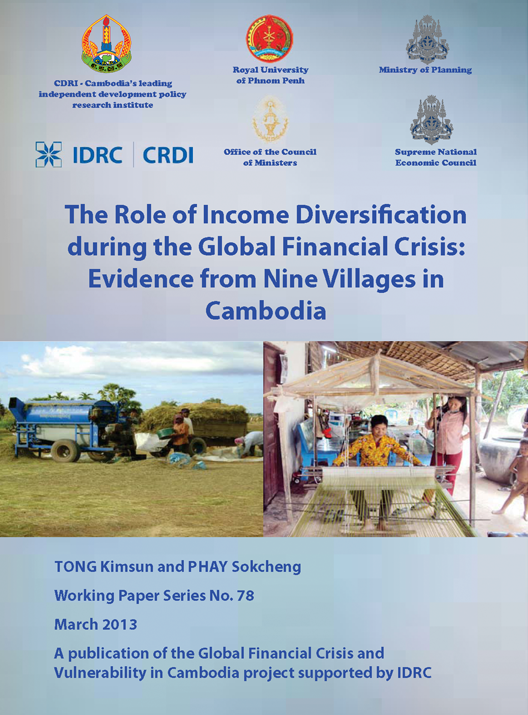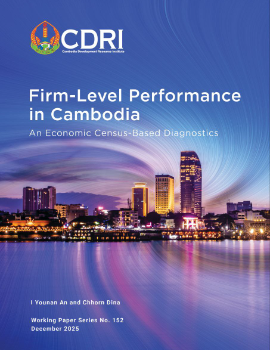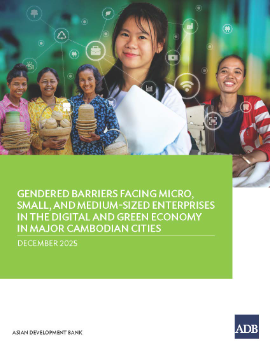
The Role of Income Diversification during the Global Financial Crisis: Evidence from Nine Villages in Cambodia
Keyword: Income diversification, rural households, global financial crisis, consumption and poverty, risk and coping strategies
Abstract/Summary
This paper uses four-period panel data covering the years 2001, 2004, 2008 and 2011 to analyse the roles of rural income diversification during the global financial crisis. Income diversification is commonly defined as a proportion of income derived from non-farm activities or the number of income portfolios. However, the use of such measures is problematic because the income diversification variable is sensitive to assumptions about the thresholds used to assign households to different income categories. To address this concern, following Dimova and Sen (2010), we use the Herfindahl index constructed as the sum of squares of the shares of different income portfolios in the household: the smaller the index value, the higher the degree of income diversification. Using both fixed- and random-effects models, we find that the number of male household members aged 15-64, household head primarily engaged in agriculture, durable assets, agricultural land endowment, health shock and crop failure are the key determinants of income diversification in rural Cambodia, where households’ diversification behaviour is mainly motivated by the desire to accumulate rather than by survival concerns. This finding suggests that richer households are better able than poorer households to seize the advantages provided by a diversified income portfolio. It also implies that accumulation-led diversification has less impact on poverty, at least in the short run, than survival-led activity. Therefore policies that reduce constraints on diversification, such as risk reduction strategies, microcredit provision, rural services, rural non-farm enterprise development, infrastructure and education improvements are in general desirable. Using the interaction of health shock and crop failure as an instrumental variable, we confirm that income diversification is strongly and positively associated with per capita consumption but is unlikely to help smooth consumption during a crisis. This result holds even if we use the poverty headcount ratio as the measure of household welfare outcomes. These findings strengthen the need for well-designed public safety nets as a risk-reducing and coping strategy.



